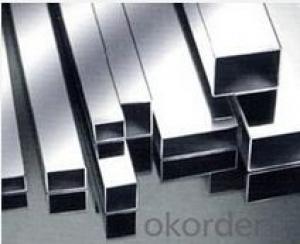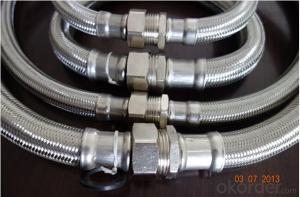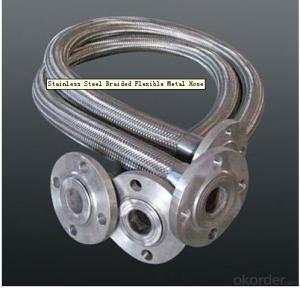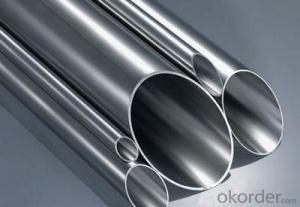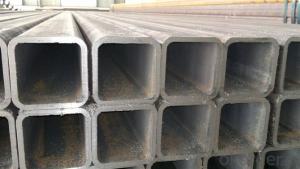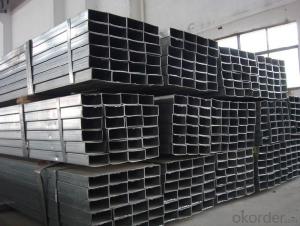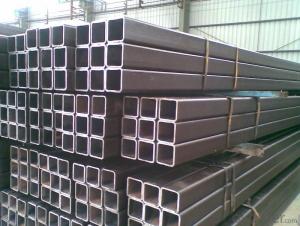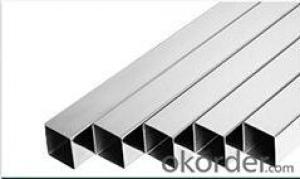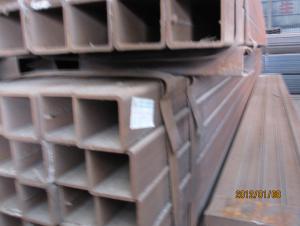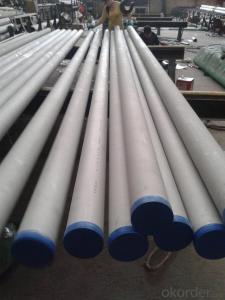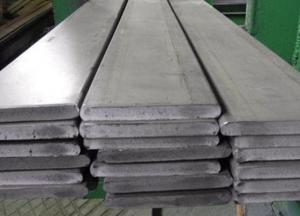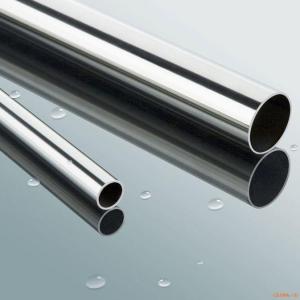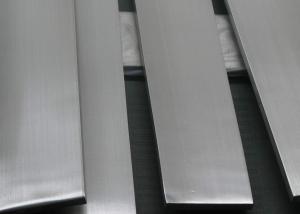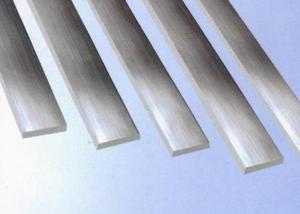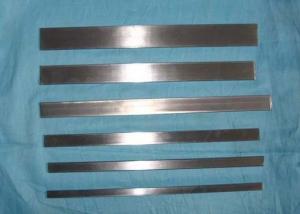Stainless seamless square steel pipe
- Loading Port:
- China Main Port
- Payment Terms:
- TT OR LC
- Min Order Qty:
- -
- Supply Capability:
- -
OKorder Service Pledge
OKorder Financial Service
You Might Also Like
Square Stainless seamless Steel Pipe
Product | Stainless Steel Square Pipe/ Stainless Steel Seamless Pipe | |
Standard | ASTM A213,ASTM A312, ASTM A269,ASTM A789, JIS G3456 JIS G3459, JIS G3463, JIS G3448 EN 10216 | |
Material | 200 Series | 300 Series |
201,202 | 301,304,304L,309S,310S,316,316L,317L,321,347 | |
Thickness | 0.2mm-80mm | |
Width | 10*10mm-300*300mm | |
Length | 1m,3m,5.8m,6m or as demand | |
Treatment | Hot Rolled,Cold Drawn | |
Application | Stainless Steel Square Pipe is widely used in Building Constructure,Machine Equipment, Water Piping,Decoration industry,Electrical and Chemical Industry | |
- Q: How do you prevent rusting in stainless steel pipes?
- To prevent rusting in stainless steel pipes, there are several measures that can be taken: 1. Regular Cleaning: Regularly clean the stainless steel pipes using mild soap or detergent and warm water. This helps to remove any dirt, debris, or contaminants that can cause corrosion. 2. Avoid Abrasive Cleaners: Avoid using abrasive cleaners, steel wool, or harsh chemicals as they can scratch the surface of the stainless steel and compromise its protective layer. 3. Protect from Chlorides: Stainless steel pipes should be protected from exposure to chlorides, such as those found in saltwater or certain cleaning agents. If the pipes are installed in areas where these substances are present, it is important to apply protective coatings or use specialized stainless steel grades that are resistant to corrosion caused by chlorides. 4. Proper Ventilation: Ensure that the stainless steel pipes are properly ventilated to prevent the buildup of moisture, which can accelerate the rusting process. Adequate airflow helps to keep the pipes dry and reduces the risk of corrosion. 5. Regular Inspections: Regularly inspect the stainless steel pipes for signs of rust or corrosion. If any damage or rust spots are detected, they should be addressed promptly to prevent further deterioration. 6. Passivation: Passivation is a chemical treatment process that helps to enhance the corrosion resistance of stainless steel. It involves removing any contaminants from the surface and promoting the formation of a protective oxide layer. Passivation should be done by professionals who are experienced in handling stainless steel. 7. Cathodic Protection: In some cases, cathodic protection can be used to prevent rusting in stainless steel pipes. This involves using sacrificial anodes or impressed current systems to create an electrochemical reaction that protects the stainless steel from corrosion. By following these preventive measures, you can significantly reduce the risk of rusting in stainless steel pipes and ensure their longevity and durability.
- Q: How do you calculate the flow velocity in stainless steel pipes?
- To calculate the flow velocity in stainless steel pipes, you need to consider several factors. Firstly, you need to know the flow rate or volumetric flow rate (Q) of the fluid passing through the pipe. This can be determined by measuring the volume of fluid passing through the pipe per unit time. Next, you need to determine the cross-sectional area (A) of the pipe. For a circular pipe, this can be calculated using the formula A = πr², where r is the radius of the pipe. Once you have the flow rate (Q) and the cross-sectional area (A), you can calculate the flow velocity (V) using the formula V = Q / A. It is important to note that the flow velocity may vary along the length of the pipe due to factors such as friction and changes in pipe diameter. In such cases, more advanced calculations or simulations may be necessary to accurately determine the flow velocity at specific points within the pipe. Additionally, it is essential to consider the properties of the fluid being transported, such as viscosity and density, as they can also affect the flow velocity.
- Q: Can stainless steel pipes be used for oil and gas refineries?
- Yes, stainless steel pipes can be used for oil and gas refineries. Stainless steel is a highly durable and corrosion-resistant material, making it suitable for the harsh and corrosive environments found in refineries. It can withstand high pressures, extreme temperatures, and exposure to various chemicals and corrosive substances commonly found in oil and gas operations. Additionally, stainless steel pipes offer excellent resistance to erosion, pitting, and cracking, ensuring the integrity and longevity of the pipeline system.
- Q: Can stainless steel pipes be insulated with polyvinylidene fluoride?
- Certainly. Polyvinylidene fluoride (PVDF) is capable of insulating stainless steel pipes effectively. PVDF, a polymer known for its exceptional durability and resistance to high temperatures, is frequently employed for insulation purposes. Due to its impressive chemical resistance, UV stability, and flame retardant characteristics, PVDF is an ideal choice for insulating stainless steel pipes in a wide range of applications. By utilizing PVDF insulation, heat loss or gain can be minimized, corrosion can be prevented, and the stainless steel pipes can be provided with added mechanical protection.
- Q: What is the difference between 410 and 416 stainless steel pipes?
- The chemical composition and intended use differ between 410 and 416 stainless steel pipes. 410 stainless steel, which contains a higher carbon content compared to 416 stainless steel, is a versatile stainless steel. This increased carbon content provides 410 stainless steel with greater strength and hardness, making it suitable for applications that require strong mechanical properties. It also exhibits good corrosion resistance in mild environments and can be hardened through heat treatment. Industries such as automotive, construction, and manufacturing commonly utilize 410 stainless steel pipes. On the contrary, 416 stainless steel is a stainless steel that is specifically designed for easy machining. It contains sulfur, which enhances its machinability. However, this sulfur content decreases its corrosion resistance in comparison to 410 stainless steel. Although 416 stainless steel offers lower strength and hardness than 410 stainless steel, it excels in machinability, making it perfect for applications that involve intricate or complex machining operations. Gears, bolts, and nuts are examples of common applications for 416 stainless steel. To summarize, the primary distinction between 410 and 416 stainless steel pipes lies in their carbon content and sulfur addition, which impact their mechanical properties and machinability. The choice between these two types will depend on the specific requirements of the application, including strength, hardness, corrosion resistance, and machinability.
- Q: Are stainless steel pipes suitable for beer brewing applications?
- Yes, stainless steel pipes are highly suitable for beer brewing applications. Stainless steel is a popular choice in the brewing industry due to its excellent corrosion resistance, durability, and hygiene properties. The smooth surfaces of stainless steel pipes prevent the buildup of bacteria, yeast, and other contaminants, ensuring a clean and safe brewing environment. Stainless steel pipes also have high temperature resistance, which is essential for various brewing processes such as boiling and sterilization. Additionally, stainless steel is an inert material, meaning it does not react with the beer, preserving the taste and quality of the final product. Overall, stainless steel pipes provide the necessary qualities for beer brewing applications and are widely used in the industry.
- Q: Are stainless steel pipes suitable for solar power systems?
- Yes, stainless steel pipes are suitable for solar power systems. Stainless steel is known for its exceptional resistance to corrosion, which makes it an ideal choice for solar power systems that are exposed to various weather conditions. Solar power systems often require the transportation of fluids, such as water or heat transfer fluids, and stainless steel pipes can effectively handle these requirements. Additionally, stainless steel pipes are durable and have a long lifespan, ensuring the longevity and efficiency of the solar power system. Furthermore, stainless steel is a sustainable and environmentally friendly material, aligning well with the renewable energy goals of solar power systems. Overall, stainless steel pipes are a reliable and suitable choice for solar power systems.
- Q: What are stainless steel pipes?
- Stainless steel pipes are pipes made from a corrosion-resistant alloy known as stainless steel. This type of steel contains a high percentage of chromium, which forms a protective layer on the surface of the pipe, preventing it from rusting or corroding. Stainless steel pipes are commonly used in various industries such as construction, oil and gas, chemical, and food processing, due to their durability, strength, and resistance to high temperatures and pressures. They are known for their longevity and low maintenance requirements, making them a popular choice for plumbing systems, transportation of fluids, and structural applications. Additionally, stainless steel pipes are highly versatile and can be easily welded, bent, or fabricated to suit specific project requirements.
- Q: Are stainless steel pipes suitable for food and beverage processing?
- Stainless steel pipes are highly suitable for food and beverage processing due to their unique properties and benefits. The popularity of stainless steel in the food and beverage industry stems from its corrosion resistance, making it ideal for environments with acids, chemicals, and moisture. This ensures the pipes remain hygienic, rust-free, and contamination-free, guaranteeing the safety and quality of the processed food or beverage. Moreover, stainless steel pipes have a smooth surface that prevents the adherence of bacteria, dirt, or contaminants, making cleaning and sanitization easier and more effective, reducing the risk of cross-contamination. Additionally, stainless steel pipes possess high heat resistance, enabling them to withstand extreme temperatures without warping or deforming. This quality makes them suitable for various food processing applications, including pasteurization and sterilization. Furthermore, stainless steel is non-reactive, meaning it does not interact with the food or beverage being processed. This ensures that the taste, odor, and overall quality of the final product remain uncompromised. In conclusion, stainless steel pipes are an excellent choice for food and beverage processing due to their corrosion resistance, ease of cleaning, high heat resistance, and non-reactive nature. These qualities make them a reliable and safe option for maintaining the hygiene and quality standards required in the industry.
- Q: Can stainless steel pipes be insulated with cellulose?
- Yes, stainless steel pipes can be insulated with cellulose. Cellulose insulation is a versatile material that can be used to insulate various types of pipes, including stainless steel ones. It provides excellent thermal insulation properties and can help prevent heat loss or gain in the pipes, improving their energy efficiency.
Send your message to us
Stainless seamless square steel pipe
- Loading Port:
- China Main Port
- Payment Terms:
- TT OR LC
- Min Order Qty:
- -
- Supply Capability:
- -
OKorder Service Pledge
OKorder Financial Service
Similar products
Hot products
Hot Searches
Related keywords
